The second day of our trip through Southern Namibia began early: we arose at 6:30 a.m. to pack up our tents, have breakfast around the remnants of the campfire, and get back on the road.
Just before noon, we arrived at the Mesosaurus Camp. The site is run by a farmer who discovered mesosaurus (a lizard-like creature that lived approximately 270 million years ago) fossils on his property. The farmer, who was a bit of a ham and clearly enjoyed having tourists, took us on a tour of part of his property, first to show us the fossils and then to tell us about the local terrain.
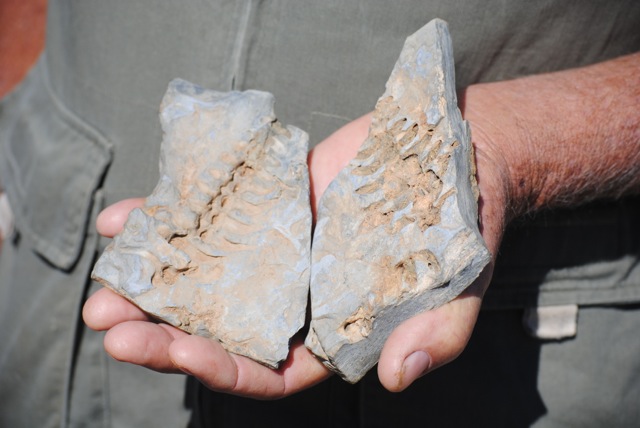
The fossils, some of which were nearly complete, were really neat to see. The farmer told us that they are still discovering fossils on his property, and that an even more complete fossil than the one he showed us has been discovered. However, under an agreement with the Namibian Government, he cannot remove the fossils from their locations, and the more complete fossil is in an area of his farm that is difficult to access.
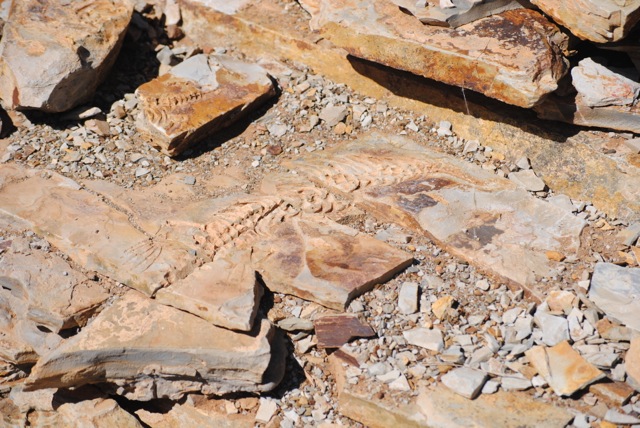
It was also very interesting to learn about the quiver trees – which are actually an aloe specific – and rock formations that we had noticed earlier on our drive.
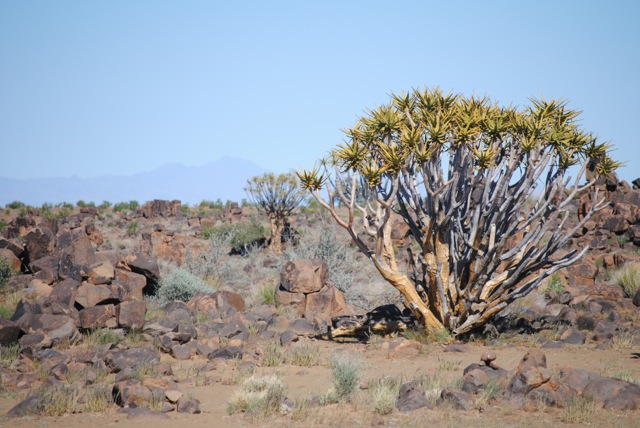
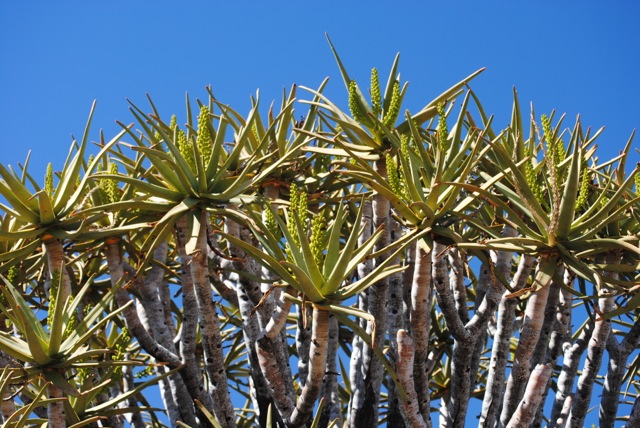
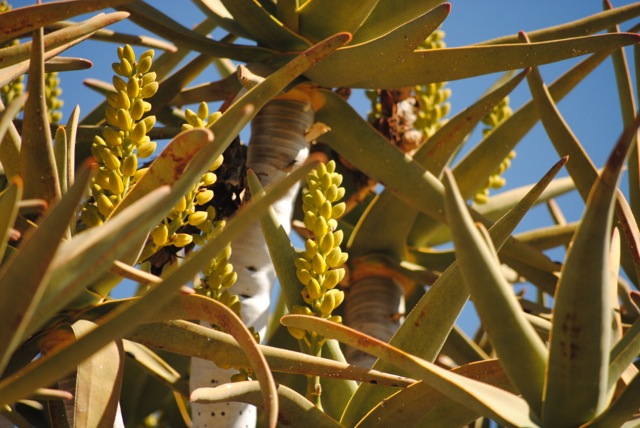
We had been particularly curious about the rock formations, which looked like towers of boulders that had been arranged by humans. In fact, these rock towers were formed when magma bubbled up under the earth and hardened into rock. These rocks were, in time, revealed by erosion, and then, after periods of heating and cooling, they cracked. The farmer, ever the showman, banged out a tune for us on the rocks.
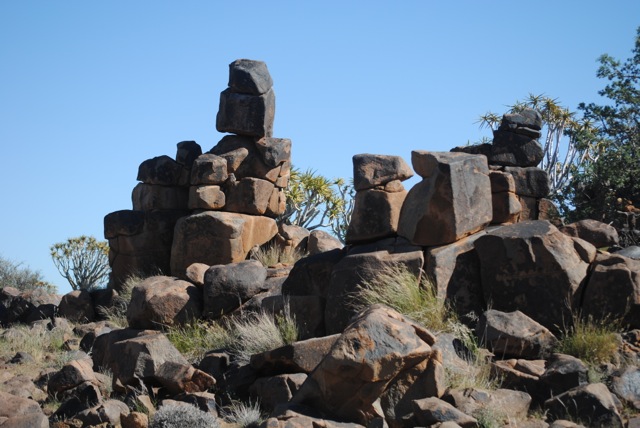
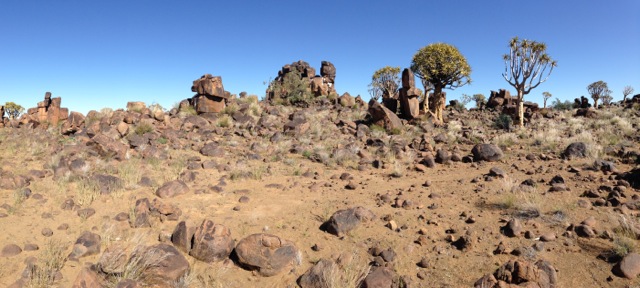
After we left the Mesosaurus Camp, we headed onto Ai-Ais.1 Along the way, we had something of an informal game drive, spying oryx, impala, springbok, zebras, and ostriches from the windows of our vehicle. At one point, we spotted a cheetah – but it turned out that, like the cheetah at Lapa Lange, this was a captive cheetah.
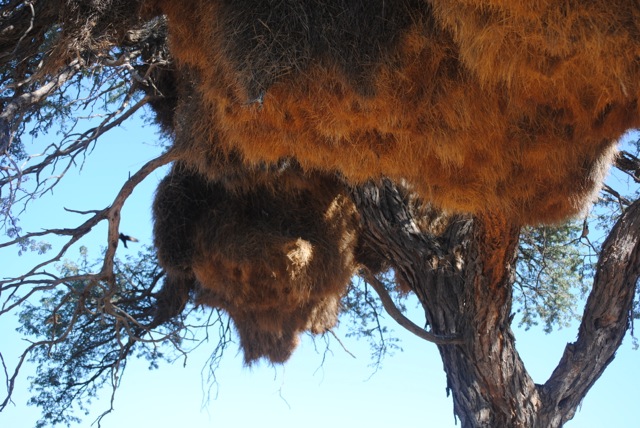
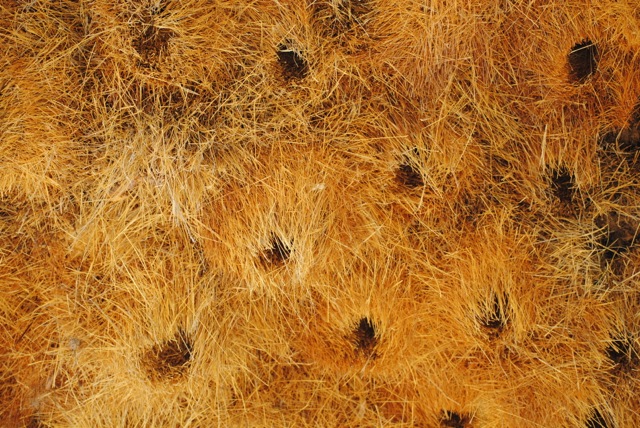
Just after sunset, we arrived at Ai-Ais Hot Springs Spa, the resort and campsite where we would be spending the night. After the previous night’s glamping, we were dubious of arriving at a campsite with “spa” in the title and where a big screen TV showing a rugby game was clearly visible, but the campsite turned out to be one of our favorites. We loved both the location (on the Fish River, just underneath the Fish River Canyon) and the swimming pool heated by the hot springs.
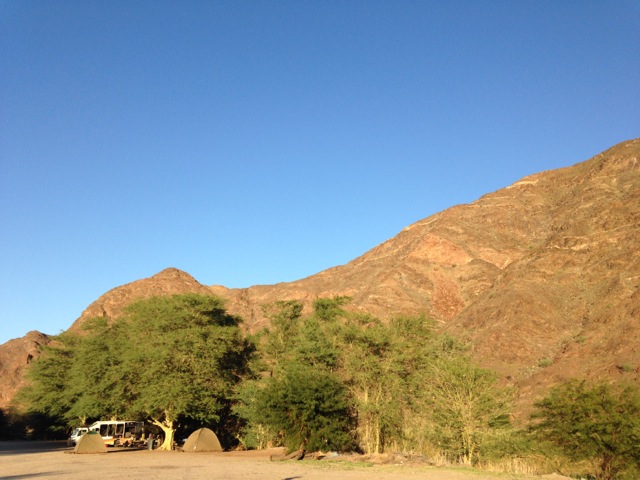
Where We Stayed:
☆ Ai-Ais Hot Springs Spa Campsite. Four goats. The location is great, and the amenities (particularly the pool) are nice.
1 Ai-Ais is Nama for “scalding hot,” so named for the hot springs located there.

